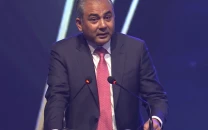Drenched and defenceless
The Pakistan Meteorological Department had already forecasted the monsoon spell weeks in advance

Heavy rains have once again brought Pakistan to its knees — paralysing entire regions and overwhelming civic infrastructure. From K-P to Punjab, the monsoon season has exposed not just the country's vulnerability to climate change, but also its chronic lack of preparedness in the face of predictable seasonal patterns.
In scenic Swat valley of K-P, flash floods have wreaked havoc. At least 11 people have lost their lives, and many more remain missing as swollen rivers and sudden deluges swept through the area. Punjab, too, has suffered greatly. Torrential downpours have resulted in at least seven fatalities and dozens of injuries in multiple districts. Emergency services have been stretched thin, transporting the injured to overcrowded hospitals, while residents struggle with blocked and disrupted power supply. This devastation is not solely the work of nature.
The Pakistan Meteorological Department had already forecasted the monsoon spell weeks in advance. Yet, pre-monsoon preparation remained patchy at best. Drains were left choked and no substantial early warning systems were rolled out in flood-prone areas. These are failures not of nature, but of governance and foresight. Climate change is undeniably intensifying these weather events. But while mitigation and adaptation require long-term planning, immediate action must be taken to improve our disaster readiness.
Local governments must invest in early warning systems, rapid response units and community-level awareness campaigns. The federal and provincial authorities must collaborate on building resilient infrastructure — especially in rural and mountainous regions.
These rains are only the beginning of what is expected to be a long and intense monsoon season. Until climate resilience becomes a core national priority and past mistakes are repeated, we will continue to mourn the same preventable tragedies year after year.















COMMENTS
Comments are moderated and generally will be posted if they are on-topic and not abusive.
For more information, please see our Comments FAQ